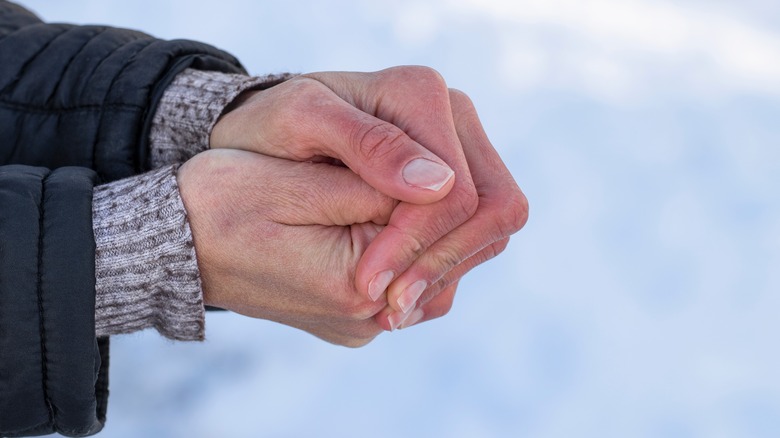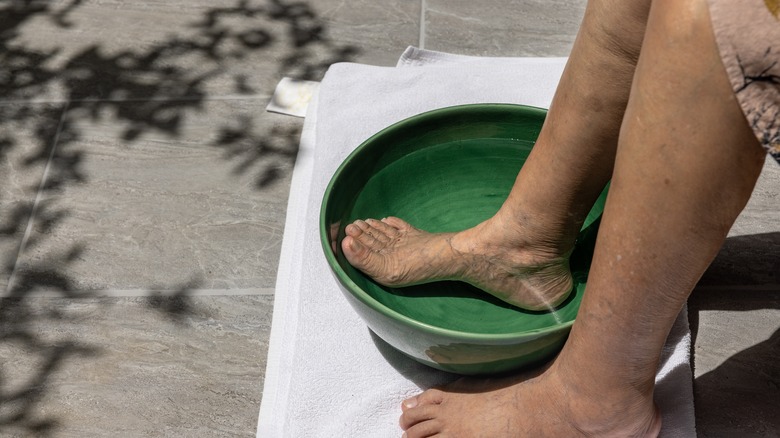How To Spot Signs Of Frostbite
During the winter, temperatures can drop below freezing, making any time spent outdoors cold and unpleasant. However, there is more to be concerned about than just being chilly, as sub-zero temperatures can also bring about frostbite. Frostbite can happen as a result of lengthy exposure to freezing cold and, if it becomes severe enough, can lead to permanent damage and possible infections, such as gangrene.
When a person develops frostbite, the skin and tissues underneath the skin's top layer begin to freeze due to cold exposure (via Nationwide Children's Hospital). Generally, the condition tends to form on the areas of skin that have direct exposure, such as the hands, fingers, ears, and nose. Frostbite comes in stages, with the first two, frostnip and superficial frostbite, being treated fairly easily (per North Kansas City Hospital). However, once it blooms into full-blown frostbite, serious complications can develop. As such, it is important to try and catch frostbite as early as possible, and know the warning signs in advance.
Knowing the stages is important
The first stage of frostbite, known as frostnip, is usually marked by a change in skin tone, with the skin turning either red, purple, or possibly even lighter than your regular tone. The skin may also be uncomfortable, with some slight tingles. At this point, the damage is not serious and can be managed by simply getting indoors and treating the area with warm water (via Cleveland Clinic). If left untreated, however, frostnip can turn into the second stage, known as superficial frostbite. When this happens, the water in your skin is beginning to freeze, which can cause swelling and a stinging sensation. You may also develop blisters and see your skin turn bluish or purple in some areas.
The third stage of frostbite is known as severe or deep frostbite. When this happens, both the outer layer of the skin and the tissues underneath have been impacted and the skin may begin to die or turn black. The area will feel numb and it will be hard to move. Your skin could also begin to blister as it warms up again. At this stage, you should seek emergency treatment right away.
Catching frostbite early is key
If you catch frostbite early, you should be able to treat it at home without much trouble. However, avoid placing the affected area in hot water, as you could inadvertently cause more damage. If your skin is too numb to feel anything, placing it in water that's too hot may lead to more severe burns. Instead, treat the area with warm water for around 30 minutes (via WebMD). In more serious cases, you may need to be hospitalized and receive pain medication or imaging to determine the severity of the damage. According to a 2015 study published in the Indian Journal of Occupational & Environmental Medicine, hyperbaric oxygen treatment may also be employed to successfully treat severe cases of frostbite.
Nevertheless, in order to protect yourself from getting frostbite, it's important to take precautions and be prepared. Make sure that you keep your fingers, toes, nose, and ears covered in freezing temperatures, and wear layers to keep yourself warm. If your clothes get wet, remove them as quickly as possible, and don't stay idle when you're outside. Staying smart, alert, and safe when you're outside in the cold will help keep you frostbite-free.



